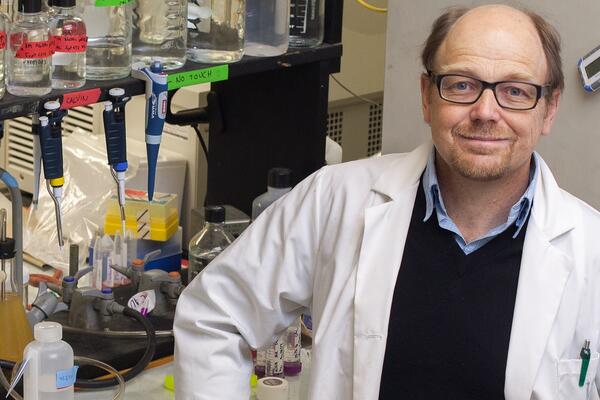
Metal catalysts used for environmental sustainability found to degrade and become less effective
Some tiny catalysts being considered for industrial-scaled environmental remediation efforts may be unstable during operation

Some tiny catalysts being considered for industrial-scaled environmental remediation efforts may be unstable during operation
By Media RelationsNew research is showing that some tiny catalysts being considered for industrial-scaled environmental remediation efforts may be unstable during operation.
Chemists from the University of Waterloo studied the structures of complex catalysts known as “nanoscale electrocatalysts” and found that they are not as stable as scientists once thought. When electricity flows through them during use, the atoms may rearrange. In some cases, the researchers found, electrocatalysts degrade completely.
Understanding why and how this rearrangement and degradation happens is the first step to using these nanoscale electrocatalysts in environmental remediation efforts such as removing atmospheric carbon dioxide and groundwater contaminants and transforming them into higher-value products such as fuels.
“Current electrocatalysts rely on complex nanoscale structures in order to optimize their efficiency,” said Anna Klinkova, a professor in Waterloo’s Department of Chemistry. “What we found, however, is that the superior performance of these complex nanomaterials often come at a cost of their gradual structural degradation, as there is a trade-off between their effectiveness and stability.”
Klinkova and her team discovered that the rearrangement of atoms in the catalyst depended on the type of metal, structural shape, and the reaction conditions of the catalyst.
They identified two reasons for the rearrangements. Some small molecules can temporarily attach to the surface of the catalyst and reduce the energy needed for an atom to move across the surface. In other cases, narrow areas within the catalyst concentrate the electron’s current, causing the metal atoms to displace via a process called electromigration.
Electromigration has been previously identified in microelectronics, but this is the first time it has been connected to nanoscale catalysts.
These findings establish a framework for assessing structural stability and mapping the changing geometry of nanoscale catalysts, which is an important step to designing better catalysts in the future.
“These structural effects could be used as one of the design rules in future catalyst development to maximize their stability,” Klinkova said. “You could also purposefully induce reconstruction to a different structure that becomes active as the reaction starts.”
The study, Interplay of electrochemical and electrical effects induces structural transformations in electrocatalysts, was recently published in the journal Nature Catalysis.

Read more
Here are the people and events behind some of this year’s most compelling Waterloo stories

Read more
Discovery of a thick atmosphere on a lava world reshapes our understanding of rocky exoplanets

Dr. Brian Dixon, professor of biology at the University of Waterloo says there is a link between cold weather and getting sick. (University of Waterloo)
Read more
Waterloo researcher shares why we get sick when the mercury dips
The University of Waterloo acknowledges that much of our work takes place on the traditional territory of the Neutral, Anishinaabeg, and Haudenosaunee peoples. Our main campus is situated on the Haldimand Tract, the land granted to the Six Nations that includes six miles on each side of the Grand River. Our active work toward reconciliation takes place across our campuses through research, learning, teaching, and community building, and is co-ordinated within the Office of Indigenous Relations.